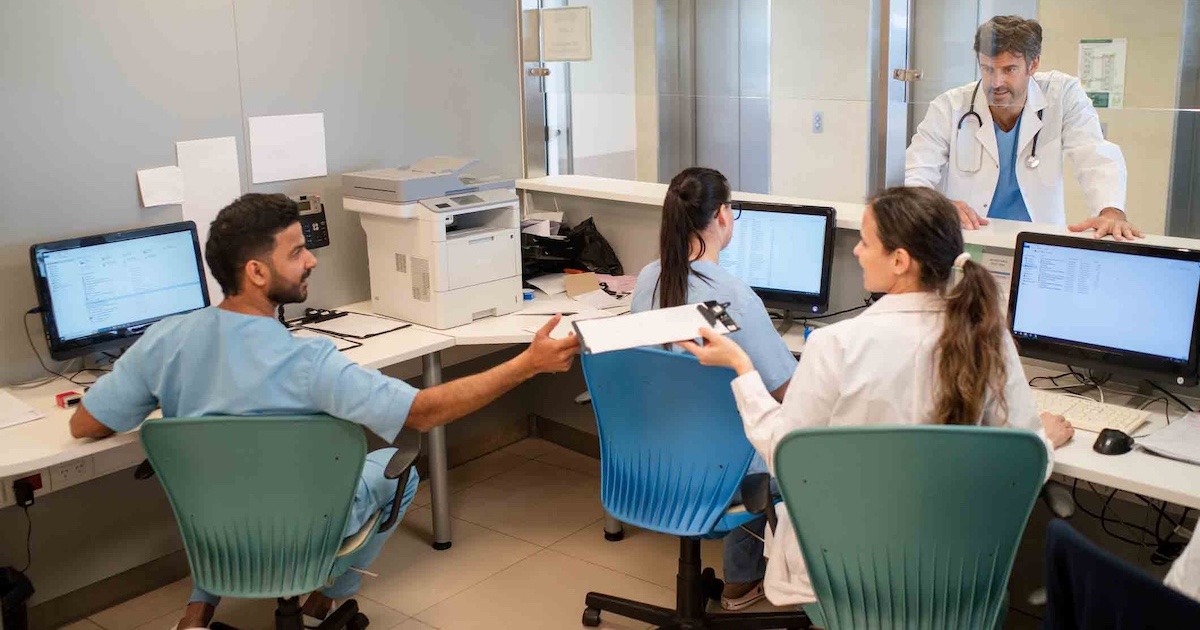A lot of people are looking at Google Glass and trying to fit it into healthcare. To Kyle Samani, that's like fitting a square peg into a round hole.
Samani's answer? Take the high-tech glasses, strip out everything that has to do with Google and start anew.
"This is primarily a communications tool, not a data access tool," Samani says of the glasses, which are expected to be publicly launched by Google to the consumer market sometime soon. "Once you figure that out, you can take a look at how (this fits into healthcare). And that's where we think that this is going to be super-compelling for healthcare."
Samani is co-founder and CEO of Pristine, an Austin, Texas-based startup that burst onto the scene last May with a couple of Google Glass apps for surgery. Those apps – Pristine EyeSight and Pristine CheckLists – are now being tested at UC Irvine, with pilots planned at the Mayo Clinic, Cleveland Clinic and Banner Health, among others.
Samani sees Google Glass' high-resoltuion video display as the key to healthcare use. It's the equivalent of a 25-inch high-definition screen viewed from eight feet, and can capture both 5MP photos and 720p video. It also has built in Wi-Fi and Bluetooth connectivity.
[See also: Google Glass vs. healthcare.]
Pristine EyeSight is a HIPAA-compliant video streaming app, securing live audio and video to and from Google Glass for one-to-one, one-to-many and many-to-many streams on Android devices, iPhones, iPads and PCs. Pristine CheckList offers voice-driven, configurable and role-based checklists for Google Glass users, be they physicians, nurses or support staff. Both will hit the market as soon as Google Glass is launched.
According to company officials, Pristine apps are voice-driven, and will eventually incorporate the Google Glass accelerometer and proximity sensor. There are also plans to integrate with Thalmic Lab's gesture-control MYO armband.
Pristine certainly isn't the only kid in the Google Glass sandbox. The innovative, consumer-facing device that made it onto IDC Health Insights' list of top 10 mHealth trends in 2014 has caught the attention of healthcare innovators from California to Europe. Orlando Portale, chief innovation officer for the San Diego-based Palomar Health network, even created a "Glassomics" incubator lab at the health system's newest hospital, and offered a demo of the Google Glass at the recent 2014 International CES in San Diego. He sees the device someday being used to identify patients and show their EHRs, scan barcodes, even call up vital signs.
But there has been pushback – and that goes far beyond the California woman pulled over by a police officer for driving with Google Glass (a charge since dropped). And a theater-goer allegedly caught trying to record a movie. Some health networks have reportedly asked their doctors to hold off on trying out the Google Glass until it's tested further. And even Google is staying out of the fray, choosing instead to focus all its efforts on the consumer launch.
'They don't want those headaches right now," Samani said of Google's reaction to healthcare interests.
To Samani, the idea of "taking Glass and un-Googling it" essentially strips out the complexity that won't work in healthcare. The eyeware's out-of-the-box functions are designed for the consumer, he said, not healthcare. "We have to do a lot of work to make this hospital-friendly."
That means finding a niche in healthcare – giving physicians a reason to use Google Glass.
'You can Google 'apps for healthcare' and find, like, 5,000 things on the Internet," he said. 'The problem is most of these things aren't economical (for the healthcare provider). You have to pick one thing and one thing only."
Related:
Could gamification be a secret to cutting care costs?
So many diabetes apps, but so few users
Hospitals wringing big savings out of RFID, sensors


